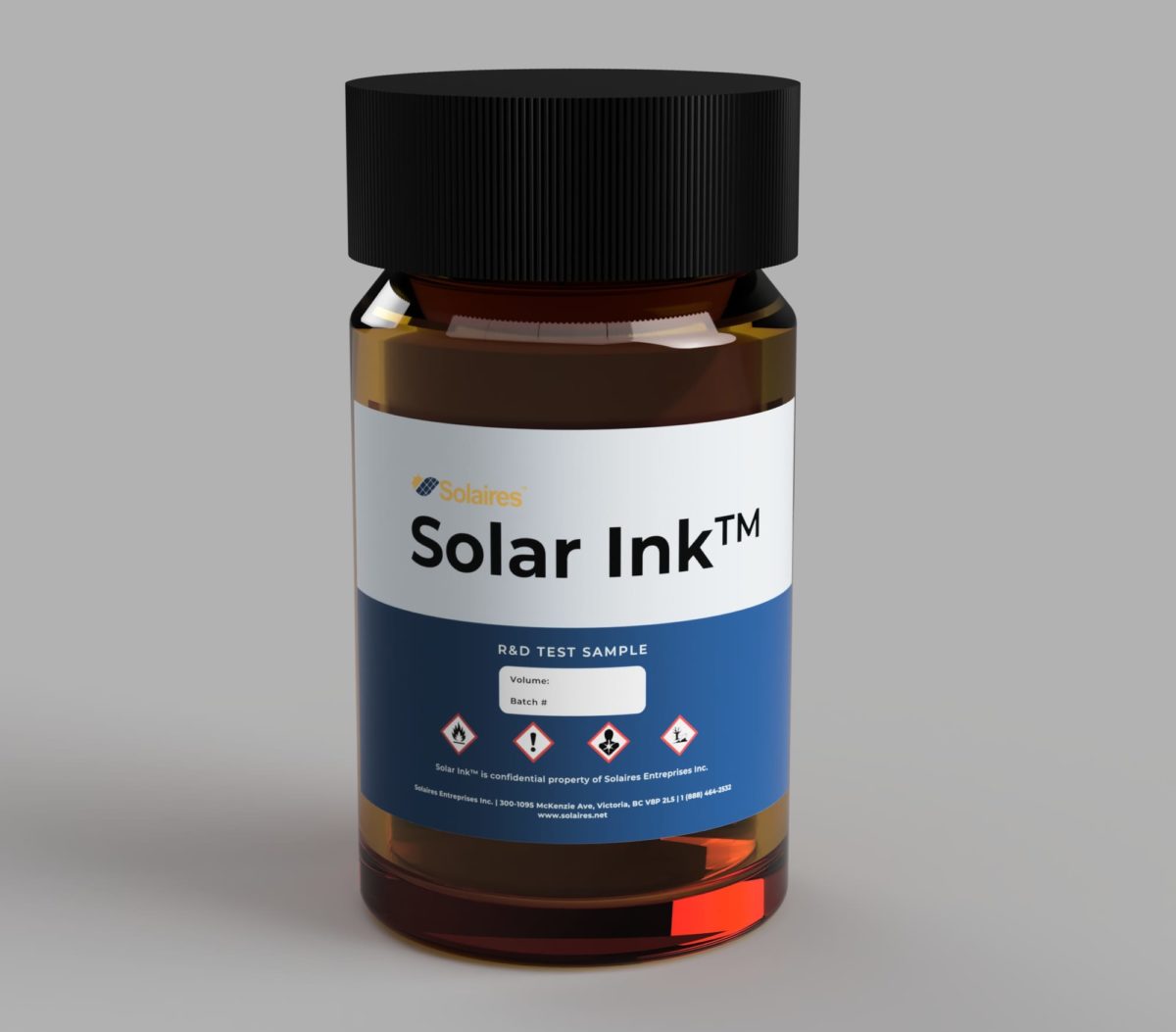Canadian start-up Solaires Entreprises Inc has developed an ink based on a mixed halide and cation perovskite with an energy bandgap of 1.54eV that can be applied to new and existing solar modules.
“The Solar Ink can be used to create standalone perovskite solar modules or it can be combined with existing solar modules in a tandem configuration,” the company's marketing coordinator, Vanness Chan, told pv magazine. “It can be applied by various coating and printing technologies such as spin-coating, blade-coating, slot-die coating, or inkjet printing.”
According to the manufacturer, the ink can be coated on both flexible and rigid substrates, resulting in translucent solar cells which, in turn, can be used to produce flexible and light modules for application in solar windows and vehicle-integrated photovoltaics where silicon, due to its rigidity and heaviness, cannot be used.

Image: Solaires Entreprises Inc.
The ink is being produced in British Columbia, Canada's westernmost province, where the company is headquartered. “We can produce up to 100ml per batch in-house and we have identified a third party vendor who can scale to 20l per day,” Chan added. “It can be used with already existing equipment in the solar industry for scalable module production.”
The ink consists of a yellow liquid with a solid content of around 46% and a shelf life of 120 days. “Perovskite solar inks are very sensitive to humidity but our ink can be stored and used in ambient conditions,” Chan further explained. “It also can be coated at low temperatures, allowing for the fabrication of flexible solar cells.”
Solaires Entreprises is currently selling the product to academic and research institutions as well as to, unspecified industrial entities. According to the company, the ink can be also used for light-emitting diode (LED) applications with strong emission in the near-infrared region.
This content is protected by copyright and may not be reused. If you want to cooperate with us and would like to reuse some of our content, please contact: editors@pv-magazine.com.




This is one great discovery with great potential